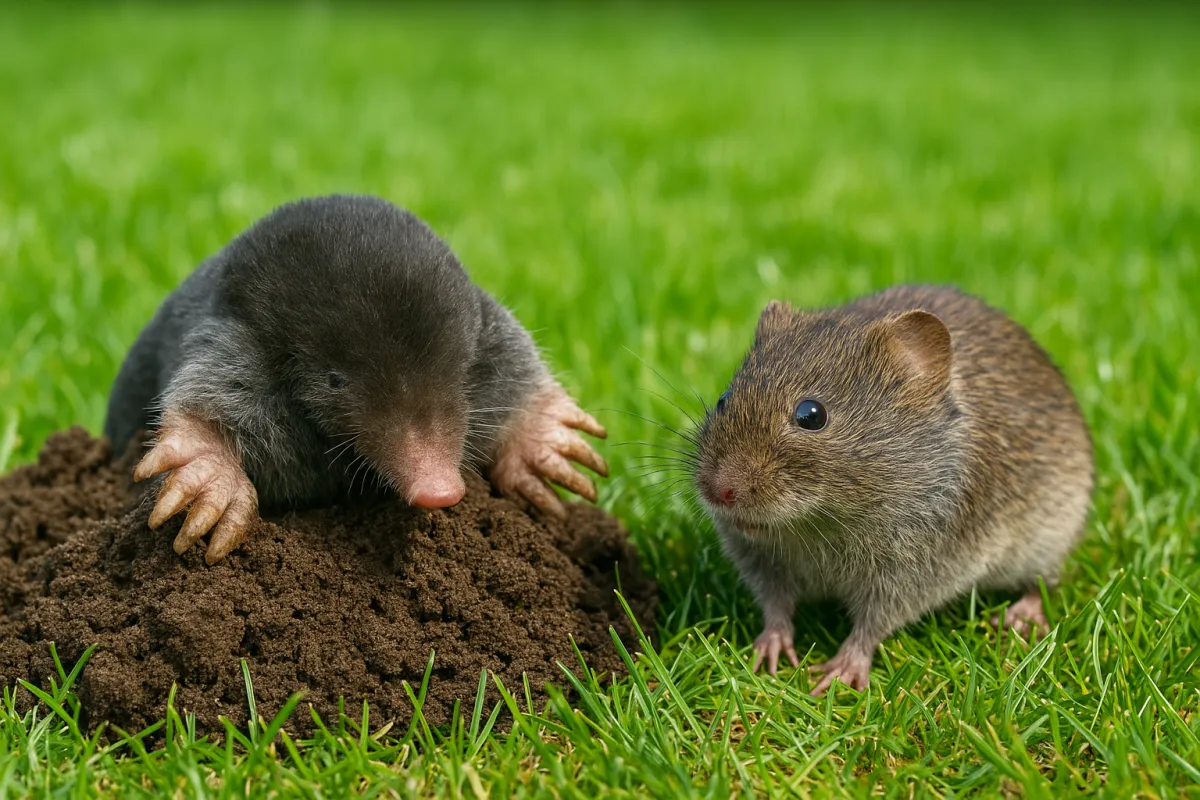
How to Tell if You Have Moles or Voles—and What to Do About It
Is your once-pristine lawn now full of mysterious tunnels, soft spots, or chewed-up plants?
If so, you’re not alone—and you’re likely dealing with one of two common pests in Central Indiana: moles or voles. While they may look similar in damage at first glance, these two lawn intruders behave very differently, and knowing which one you're up against is key to effective treatment.
At Blue Duck Pest Control, we specialize in mole and vole pest control in Indianapolis and surrounding suburbs like Carmel, Fishers, Noblesville, and Greenwood. Here’s how to spot the difference—and what to do next.

Mole vs. Vole: What's the Difference?
Moles
What They Eat: Insects, grubs, and earthworms
Signs of Damage: Raised tunnel ridges, soft spongy soil, volcano-shaped mounds of dirt
Behavior: Solitary; fast diggers that live underground almost entirely
Goal: They’re after insects—not your plants, but they can still destroy your yard in the process
Voles
What They Eat: Grass, bulbs, and roots (they’re vegetarians)
Signs of Damage: Surface runways in the grass, nibbled plants or bark near the base, sudden dead spots in landscaping
Behavior: Rodents (think: chubby field mice) that create shallow tunnels and live in groups
Goal: They’re eating their way through your landscaping
Bottom Line:
If your yard has tunnels with dirt mounds—think mole. If your plants are disappearing and you see runways or chewed bark, it’s probably voles.
Why Are Moles and Voles a Problem in Central Indiana?
Central Indiana's clay-heavy soil, combined with frequent rainfall and lush suburban lawns, creates the perfect habitat for both moles and voles. Well-irrigated lawns attract grubs and worms, drawing moles. Mulched flower beds, ornamental grasses, and rock landscaping make excellent cover for voles to hide and nest.
Homeowners in areas like Westfield, Noblesville, and Fishers often experience peak mole and vole activity in early spring and fall, when these critters are most active in feeding and tunneling.
DIY Isn’t Always Enough
Many homeowners try:
Sonic repellents
Castor oil sprays
Traps and bait
Home remedies like coffee grounds or cayenne
But here's the problem: Moles are territorial, clever, and persistent, and voles breed quickly. Without professional intervention, you're likely to see the damage return—or never fully stop.
How Blue Duck Pest Control Can Help
We offer targeted pest control services specifically for moles and voles in the Indianapolis area. Here's what sets us apart:
✅ Accurate Identification – We determine whether you have moles, voles, or both
✅ Safe & Eco-Friendly Treatments – We use pet-safe, family-friendly products
✅ Long-Term Prevention Plans – We help reduce the attractants and hiding places
✅ Expert Advice – From lawn grading to grub control, we educate you on how to protect your yard long-term
What Happens If You Ignore the Problem?
Mole tunnels can cause:
Damage to roots and sprinkler systems
Dangerous soft spots in the yard
Soil erosion and patchy grass
Vole activity leads to:
Destroyed flower beds and garden plants
Bark stripping on trees, weakening or killing young saplings
Rapid population growth if left untreated
Call in the Pros Before They Take Over
You’ve worked hard to make your yard a place your kids and pets can enjoy. Don’t let moles and voles take that away. Our mole and vole pest control services in Indianapolis and surrounding suburbs are designed for busy families who want long-term results without lifting a finger.
Let us handle the pests—so you can get back to enjoying your lawn.
📞 Call Blue Duck Pest Control today or request a quote online to schedule your mole or vole inspection!